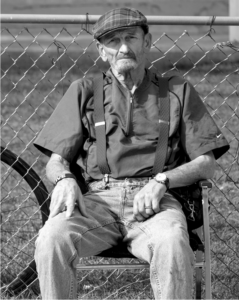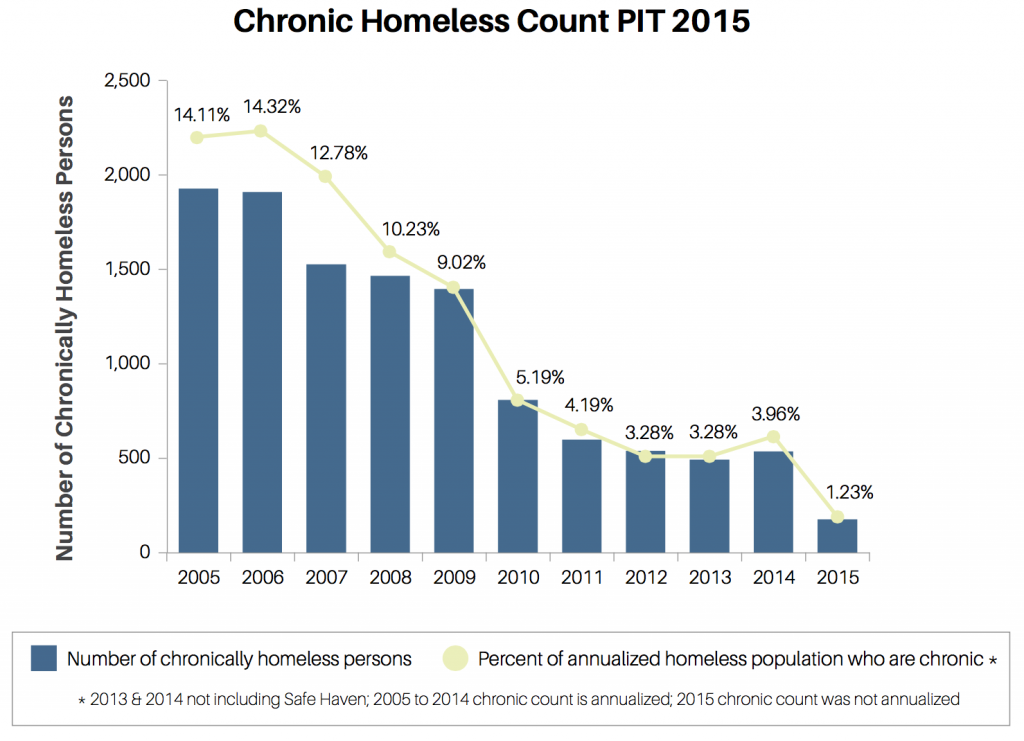
Utah has led the nation in fighting chronic homelessness thanks to “Housing First,” a government program focused on giving homeless individuals a place to live before treating their potential addictions or mental illnesses.
According to the U.S. Housing and Urban Development Department, chronic homelessness is defined as those who experience homelessness for longer than a year or have three-to-four episodes of homelessness over three years while having a disabling condition.
The idea behind Utah’s program came from a conversation between Lloyd Pendleton, director of The State of Utah’s Homeless Task Force, and Sam Tsemberis, who is considered the originator of the “Housing First” model. Utah is the only state thus far to execute this program statewide.
At first the project seemed counterproductive, but its 10 years of success have proved otherwise.
“The traditional approach to chronic homelessness was not yielding the results that we desired, so we looked for new innovations,” said Nic Dunn, a public information officer in the Utah Department of Workforce Services. “We tried the housing first approach as a pilot with a small contingent of chronically homeless individuals to see if it could work. After that success, we expanded it and have seen the resulting benefits of the approach.”

Utah has seen a drastic decline in people who are chronically homeless since 2005, when approximately 2,000 people were considered chronically homeless. Today, the number is less than 200 people — a 90 percent decline.
Those who are given a home through the program are required to both work and pay a monthly rent that is equal to 30 percent of their income or $50, whichever figure is higher.
As reported by Business Insider, “it requires that homeless people get a job and get sober before they are given more permanent options.”
The majority of those ushered into this program leave with permanent housing after a couple of years, and only nine percent return to homelessness, according to the comprehensive report created by the Department of Workforce Services.
There are many beneficiaries of the program. While people who are chronically homeless make up only 5 percent of the state’s homeless population, they consume nearly 50 percent of all resources provided by homeless services.
Each time an individual who was considered chronically homeless is housed, community systems and service providers across the state save an estimated $8,000, which translates to an additional 2.4 non-chronic homeless individuals served, according to the Utah Housing and Community Development Division.
While “Housing First” offers temporal benefits, several volunteers find satisfaction in helping the community. Jena Anderson, a BYU student from Bluffdale, Utah, and a former program and executive director, encourages all students to find opportunities to serve those in need.
“It’s incredible and irreplaceable. Having the opportunity to interact with these people is a privilege,” Anderson said. “We get to be the ‘cog in the wheel’ so-to-speak; its our chance to be a part of something bigger than ourselves and watch people change their lives for the better.”
Anderson encouraged BYU students to take advantage of opportunities such as getting involved in Y-Serve and taking classes like Learning Through Service: Student Development 290, because they connect students to community projects and statewide programs similar to “Housing First.”
Dunn said the people who are being helped by the program also appreciate its structure. He spoke with Russell Flowers, a chronically homeless man who moved into supportive housing, about the fruits of service.
“Russell said that this housing resource was a hand up, not a hand out. It was moving to hear him talk about the positive impact it had on his life, and helped him move toward reconnecting with his family,” Dunn said.
By the end of this year, Utah’s homeless action plan will come to a close, and contributions from all Utahns will be encouraged to further this effort.
“Passionate Utahns can help by donating on their income tax return to the Pamela Atkinson Homeless Trust Fund, reaching out to local food pantries to donate or volunteer, or contact local elected officials’ offices in cities where homelessness is a concern,” Dunn said. “Utah is often lauded as the most charitable state in the nation, and the generosity of Utahns can continue to be a resource to help our homeless residents.”




